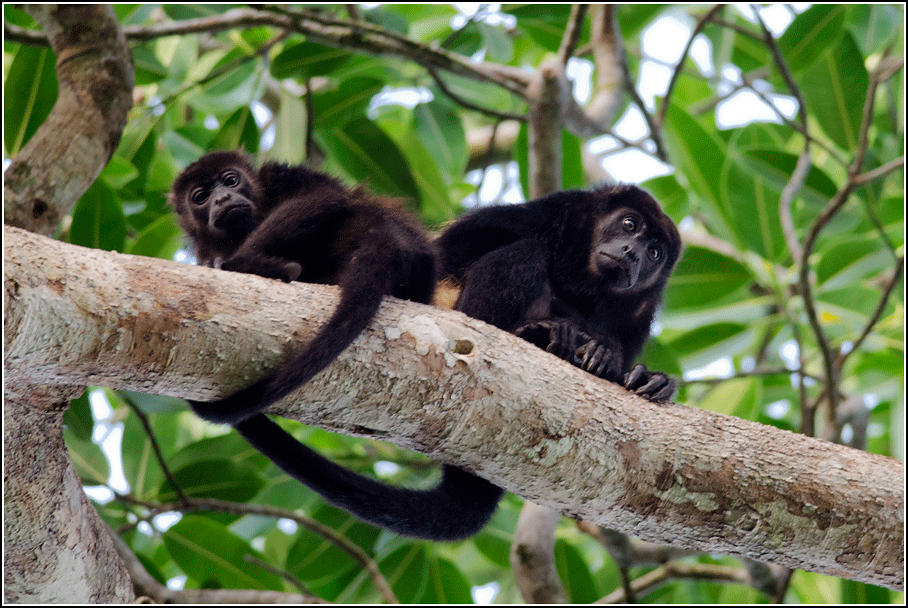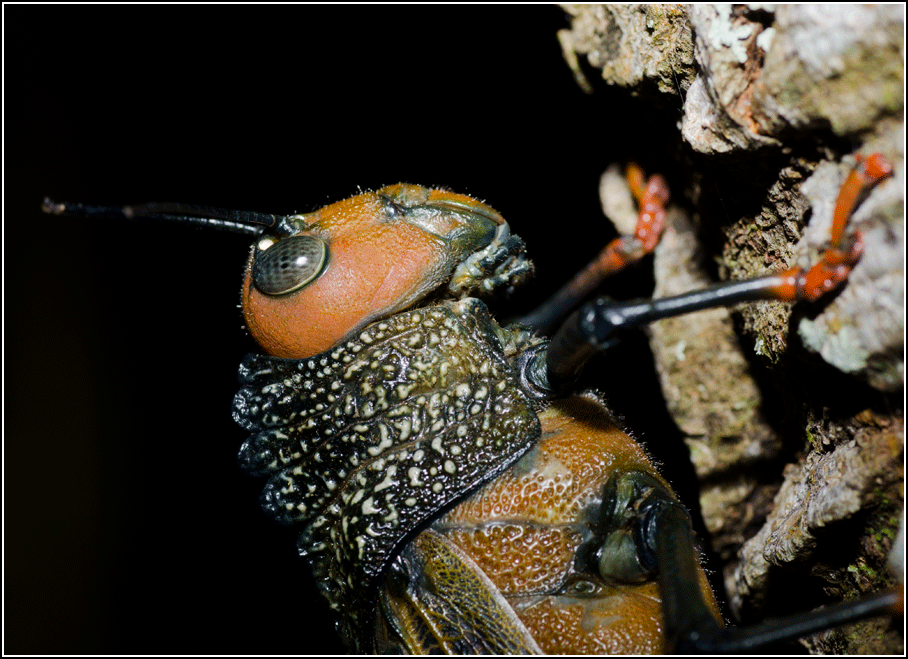The Saturday morning dawned warm with a strong southwest wind. Dave and I slept in a bit later than hoped and arrived at the tip around 8:15. Blake Mann and Jeremy Hatt were already there, having stationed themselves on the west side of the tip along one of the openings in the trees along the path. It provided a bit more protection from the elements than the very tip while also giving a great view of the action on the lake. Bonaparte's were streaming by when we arrived and sure enough, they had seen a Sabine's Gull about 15 minutes earlier as it flew by closely with some Bonaparte's. A great find, and one that I still needed for my Pelee list.
Blake called out a shorebird which Jeremy and I happened to get on right away. I watched it for a while - a phalarope with a gray back and white wingstripe that we concluded was a Red Phalarope. I find that normally views of phalaropes are often fleeting as the tiny shorebird whizzes by. This was one of the better and longer looks I had had at a flyby phalarope and definitely a nice change!
Dwayne Murphy stopped on by and Jeremy Bensette showed up as well. As I was scanning the horizon I spotted what looked like a jaeger coming in. It ended up flying right as us, banking as it approached the shoreline. It was close enough that we were able to photograph the adult Parasitic Jaeger relatively well (for a jaeger). This was a new Pelee bird for some and a year bird for everyone present. I think it was my third Parasitic that I've seen at Pelee - all along the west side.
 |
| Parasitic Jaeger - Point Pelee National Park |
 |
| Parasitic Jaeger - Point Pelee National Park |
Even apart from the rarities, the lake watching was actually pretty decent. It is too early to get large numbers of ducks, loons or grebes, but terns are still going by. Ten juvenile Black Terns were seen, two Caspian Terns, and the odd Forster's Tern was mixed in with the Commons. This time of year Forster's Terns show a diagnostic black patch around their eye that does not extend to the nape. Here is one with a group of Bonaparte's.
 |
| Forster`s Tern (second from left) - Point Pelee National Park |
A massive flock of Ring-billed and Bonaparte's Gulls was offshore to the northwest - usually at too great a distance to thoroughly scan through. At times a distant jaeger would send a bunch of them flying around in a panic. Too far to identify, though!
By noon the lake watch was dying down so we continued up the west side to the tram loop. Dave spotted this little Dekay's Brownsnake on the path, likely a neonate born only a few months prior.
 |
| Northern Brownsnake - Point Pelee National Park |
The rest of the day was non-eventful bird wise. The strong winds weren't really conducive to passerine birding and the wrong direction for hawks. Dave, Jeremy Hatt and I decided to explore the Couture Dyke at Hillman Marsh as it is a place that is rarely checked by birders. The dyke goes out into the marsh and completed a big loop and passes through several habitat types. I have seen a few good birds there in the past (Yellow-crowned Night-Heron, American Avocet, American White Pelicans, weird ducks in the summer, etc) and sometimes shorebirds are there so it is always worth checking on a slow day! While the walk was nice the birds did not really co-operate on this day. It was pretty warm out in the marsh as well and certainly felt like mid-summer for one of the last times of the year.
On Sunday morning Dave, Jeremy and I left Jeremy Bensette's place and in the park early as the winds were again forecast out of the southwest, switching to northwest as the day wore on. We were the first ones in the park at dawn and immediately walked down to the tip. While the winds were due west the birds were flying by and it was shaping up to be a good morning of lakewatching.
The highlight of the morning happened around 9:00 AM just as Jeremy Bensette arrived. I was scoping to the right when I caught site of a close jaeger, blasting through my scope view. Jeremy immediately got on it as well and we watched the bird, a subadult Pomarine Jaeger as it cruised on by not far from shore. Dave and Jeremy got on it as well and had decent views of their lifer Pom! The Pom was a satisfying new Pelee bird for me as it was #300.
Later on I had brief views of a distant phalarope cruising by low to the water. Unfortunately it was very distant and I wasn't able to confidently ID it before it was out of site.
Several ducks (Green-winged Teal, Red-breasted Merganser, scaup, etc) went past, a sign of more to come in the coming weeks. An adult Little Gull also streamed by with a flock of Bonaparte's. All in all it was a great morning of lake watching!
We called it quits by 1:00 PM and Dave and I were on our way, slowly making our way back home. Lunch again was at the Red Bus (Birdie's Perch) along Point Pelee drive, the third time in three days for us...
A check of Wheatley harbour was next (nothing there but a whole pile of Ring-billed Gulls!) and Dave and I were on our way. We did make one brief side-trip up to Waterloo to look for a long-staying Snowy Egret, but it eluded us during the torrential downpour that ensued as we arrived.
It had been another successful trip to the Pelee area with some great birds - I can't wait to get back.
I am now back at work for a few days before leaving for Smooth Rock Falls on Wednesday evening. From there I will meet up with Alan Wormington and take the train to Moosonee where we will stay for a night, meet up with Jeremy Bensette and Kory Renaud, and take a helicopter to the James Bay coast. It will be my third Netitishi trip in three years and my first during the late September/early October time-frame - I'm pretty excited for a few weeks on the coast doing nothing but birding. I'll have more on that trip sometime over the next few days.
.gif)







.gif)








































.gif)




